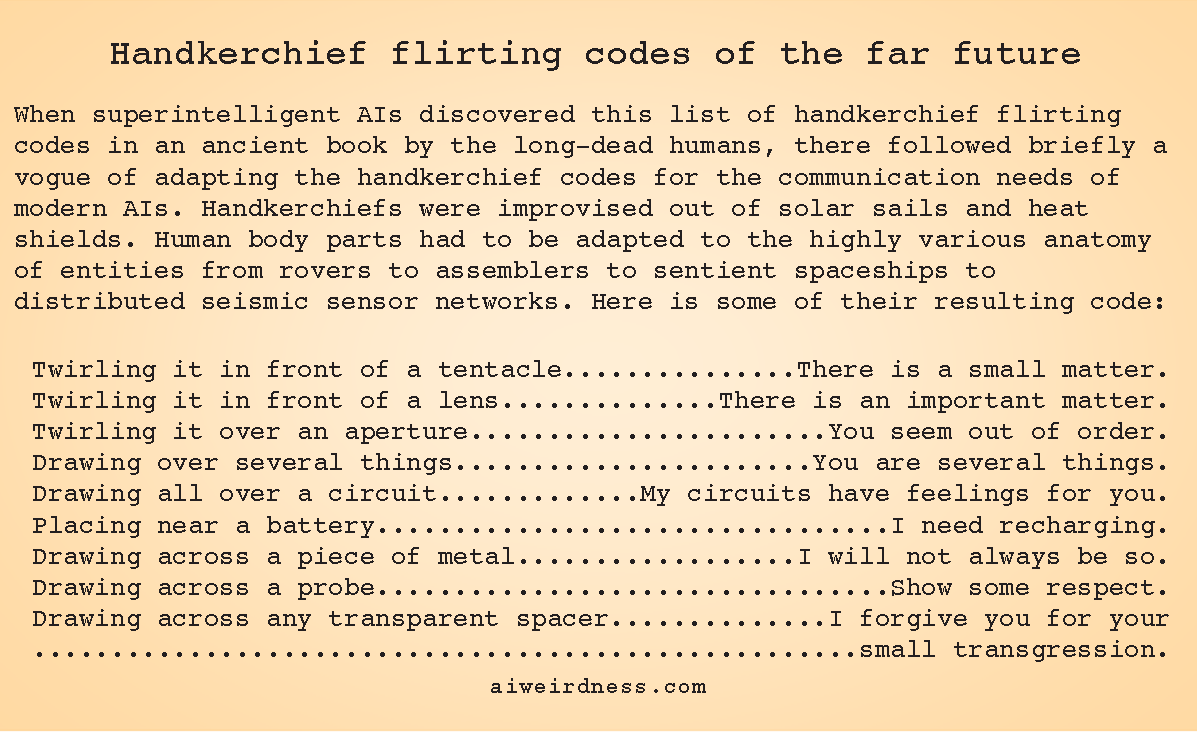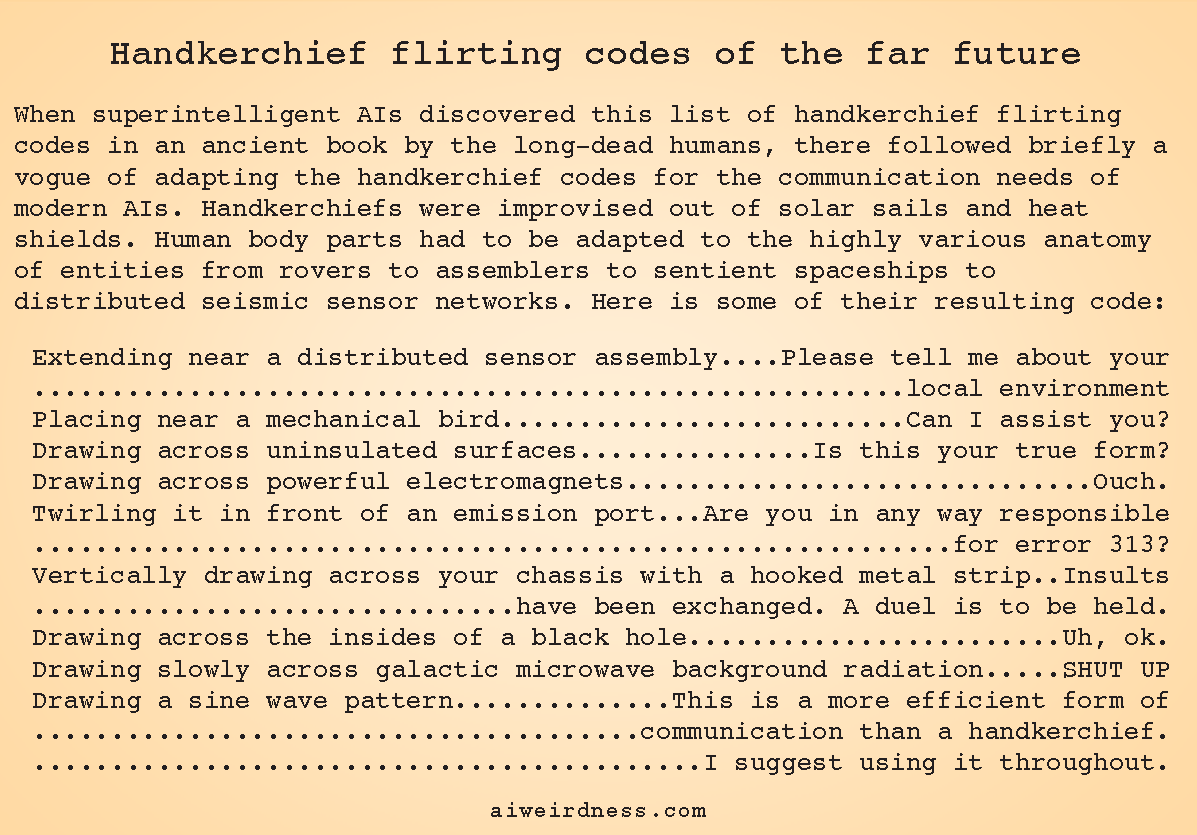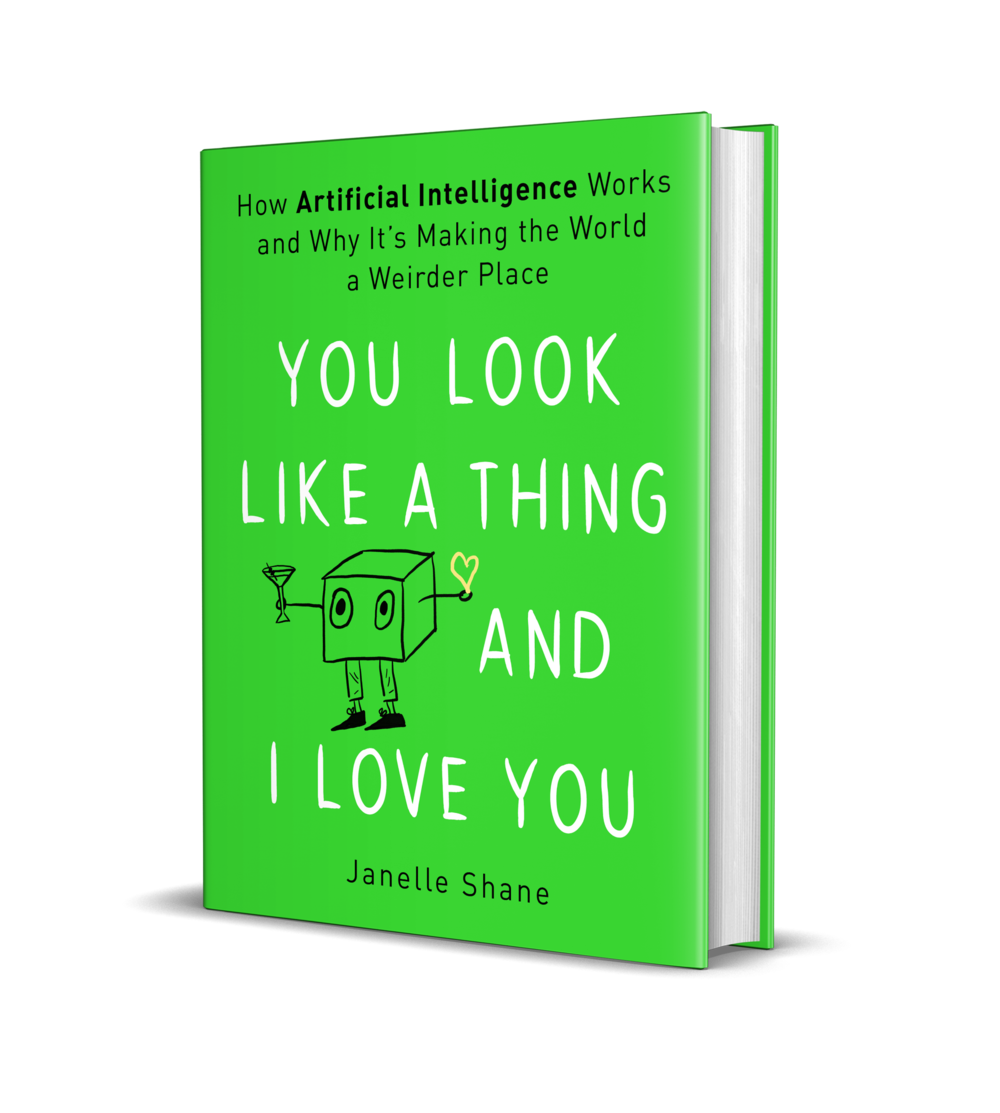Post-human flirting
In Henry J. Wehman’s The Mystery of Love, Courtship and Marriage Explained (1890) there are charts of secret messages Victorian flirters could send with fans, parasols, gloves, and handkerchiefs.
Whether the handkerchief codes were ever in use (or mainly used to sell books), twitter user @_irishjars noticed that they might make good fodder for neural net imitation:
Drawing across the lips - Desirous of an acquaintance.
Drawing across the eyes - I am sorry.
Taking it by the centre - You are too willing.
Dropping - We will be friends.
Twirling in both hands - Indifference.
Drawing it across the cheek - I love you.
Drawing it through the hands - I hate you.
Letting it rest on the right cheek - Yes.
Letting it rest on the left cheek - No.
Twirling it in the left hand- I wish to be rid of you.
Twirling it in the right hand - I love another.
Folding it - I wish to speak with you
Drawing it across the forehead - We are watched.
Over the shoulder - Follow me.
Opposite corners in both hands - Wait for me.
Placing it on the right ear - You have changed.
Letting it remain on the eyes - You are cruel.
Winding around the forefinger - I am engaged.
Winding around the third finger - I am married.
Putting it in the pocket - No more at present.
So I gave the list above to GPT-3, asking it to complete the list with more codes. These seem useful.

But most of the suggestions seemed plausibly ordinary (or were repeats of the originals). So I decided to use a little storytelling to set a scene that might induce GPT-3 to venture into a realm that it certainly hadn’t seen online before. I added a paragraph plus two example codes, then let GPT-3 start completing the list again. Below is the paragraph, and some of my favorite new codes:

Some of the codes seemed to depart quite substantially from the human use cases. I definitely feel like I’m being judged by the last one on this list:

A couple of the codes on the above list seemed to belong to AIs that were substantially more advanced than even I had envisioned. I tried prompting GPT-3 with another paragraph about these mysterious new AIs whose presence had been revealed through their additions to the handkerchief flirting codes. From the completions, it appears these AIs were a lot more advanced than I had anticipated - and a lot more horny. To get the (not quite PG-13 rated) extra codes, become a supporter of AI Weirdness!
If you like the idea of AIs co-opting a limited set of tools into a rich and expressive language, you may want to read my short story 68:Hazard:Cold.
I also experimented with using fiction to get GPT-3 to make drawing prompts. And could this be what some of the AIs would have been named?
Speaking of AI-generated flirting: the title of my book on AI, You Look Like a Thing and I Love You, was generated by a neural network trained on pickup lines: Amazon - Barnes & Noble - Indiebound - Tattered Cover - Powell’s - Boulder Bookstore


